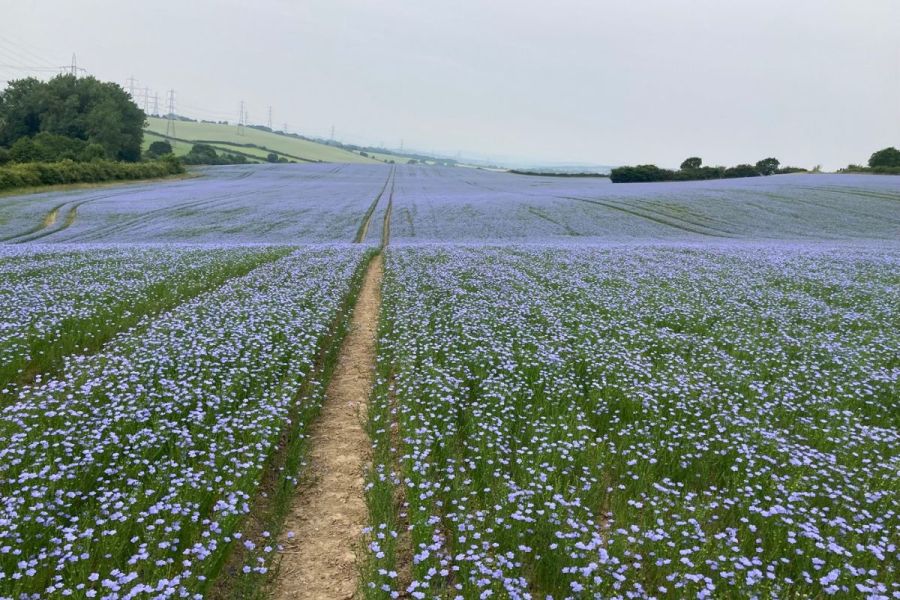Linseed might hold some negative connotations among farmers but could its potential as an alternative break crop to oilseed rape be undervalued? CPM takes a closer look at the blue flowered beauty.
Only combine it when the sun is shining.
By Melanie Jenkins
Earlier in 2022, it looked like oilseed rape might have been making somewhat of a comeback, but the summer heatwave and subsequent drought has meant ground conditions have been less than ideal for drilling in August. So maybe it’s time to take another look at linseed and its potential as an alternative break crop.

Linseed is an oilseed version of the flax crop, which is primarily grown for its oil content, says Nigel Padbury.
According to Nigel Padbury of Premium Crops, linseed is an oilseed version of the flax crop. “It’s primarily grown for its oil content, although the vast majority of UK produced seed ends up in animal feed rather than as an oil, largely because of its high Omega-3 content,” he explains. “In the UK, the linseed crop is split into the more traditionally grown spring linseed, and winter linseed. Roughly two thirds of what’s grown here is spring linseed and winter is relatively new on the scene in breeding terms, as it’s only been around for the past 10 years.”
Linseed offers growers a break crop that’s in a totally different family to anything else grown in the UK, says Todd Jex, Agrii agronomist. “This is advantageous as it provides another break crop option within the rotation, which is important as most farmers are trying to avoid growing OSR and pulses closer than one in four years.”
Whereas growers have been under increasing pressure with their OSR sowing dates, winter linseed can be drilled anytime in September, according to Nigel. “This can allow for a much bigger window to catch soil moisture and permits a slightly longer gap following the previous cereal, meaning growers can achieve a stale seedbed to get rid of volunteers.” And this is an important opportunity as weed control can be a challenge, he adds.
And whereas the aim with OSR is to get ground cover as quickly as possible, winter linseed is almost the opposite, explains Nigel. “But getting the crop away is vital and it still needs a firm, fine seedbed with moisture.”
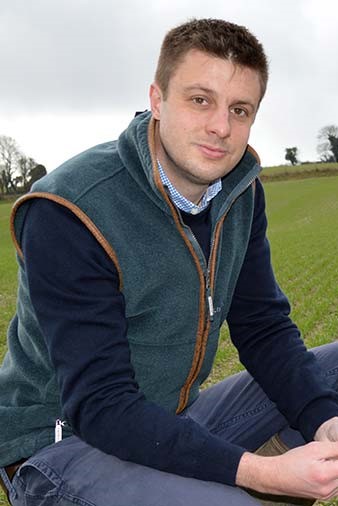
Linseed provides another break crop option within the rotation, says Todd Jex.
Linseed – being part of the flax family – produces extensive fibrous roots, a factor which is attractive in no-till situations, says Todd. “Its root system is good at structuring the top 5-10cm of the soil profile and acts as root conditioner for the following crop. If wheat follows linseed, it usually establishes really well, helped in part by the reduced slug burden when compared with something like OSR.”
One potential positive with linseed is that the nitrogen requirement is considerably less than OSR, says Nigel. “Winter linseed requires about 120kgN/ha and spring needs 80-120kgN/ha, depending on soil type. So there can be a significant saving.”
The first application of N, at 50kgN/ha, usually wants to go on at the end of Feb into early March, explains Hannah Foxall of Premium Crops.
“But if the crop is really tall – around 15cm – you can waive this. But if the crop has been pigeon grazed then put N on to help it tiller. Then at green bud stage, when the crop’s about to flower, apply 70kgN/ha as this feeds yield.”
The crop will likely require applications of P and K at about 30kg/ha – typically in the spring but this is flexible, adds Hannah. “It may also require 30-50kg/ha of sulphur but other than that it’s a simple crop that doesn’t require masses of inputs.”

If the winter is wet, linseed can be susceptible to Kabatiella, which is a phoma-like disease, says Hannah Foxall.
Linseed also has an advantage of not suffering from many pest or disease problems, and it’s fairly well covered in terms of crop protection, according to Nigel. “The crop can suffer from a bit of fusarium or pasmo (Septoria linicola) but very few pests.”
If the winter is wet, linseed can be susceptible to Kabatiella, which is a phoma-like disease, says Hannah. “We tend to advise putting Difcor (difenoconazole) on in the autumn to protect linseed crops over the winter.”
In spring linseed, fungicides can help regulate growth but for winter varieties Hannah suggests using a growth regulator in the spring. “Use metconazole and then go in with Toprex (paclobutrazol+ difenconazole) if it’s really tall,” she says. “The last fungicide is a tebuconazole at the end of flowering to prevent botrytis as this makes linseed go mouldy.”
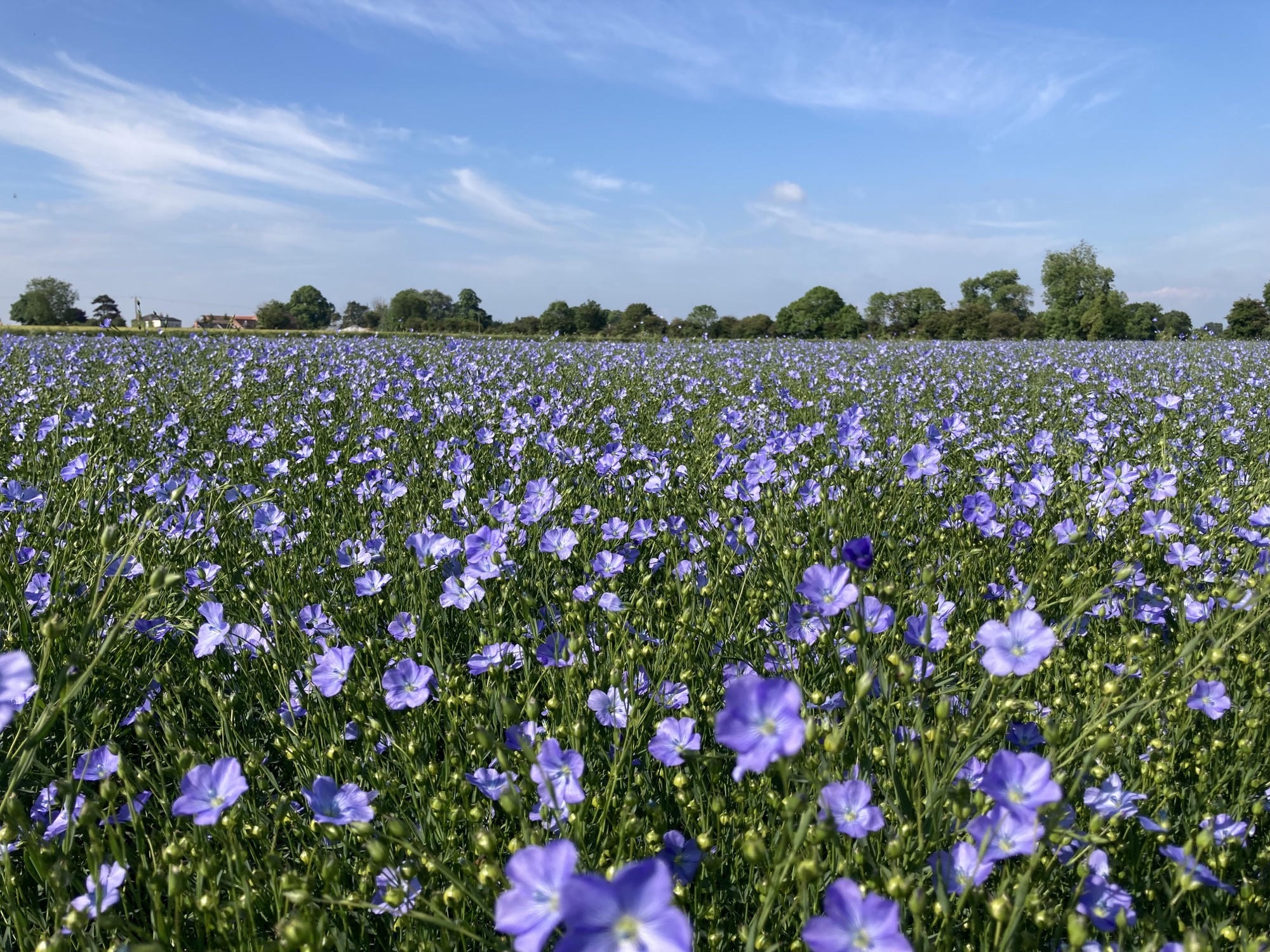
Linseed – being part of the flax family – produces extensive fibrous roots, a factor which is attractive in no-till situations.
Notably, linseed doesn’t suffer from any cabbage stem flea beetle (CSFB), but spring linseed can be susceptible to flax flea beetle, says Nigel. “Winter linseed avoids the flax flea beetle as it grows at the wrong time of year for it.”
Slugs also seem to dislike the crop, he adds. “They don’t like mature linseed but can have a go at the soft cotyledons so they might require controlling in autumn.”
And pigeons can be a danger if they graze the crop in February, but they won’t kill it, says Hannah. “It will tiller back.”
Linseed is lower input than OSR, according to Todd. “It requires less money invested in inputs to optimise crop performance – needing less than half the N required by OSR and other inputs at a level more similar to pulses. But it’s a crop that goes in cycles, with people growing it and then dropping it after a poor year before potentially revisiting it again.”
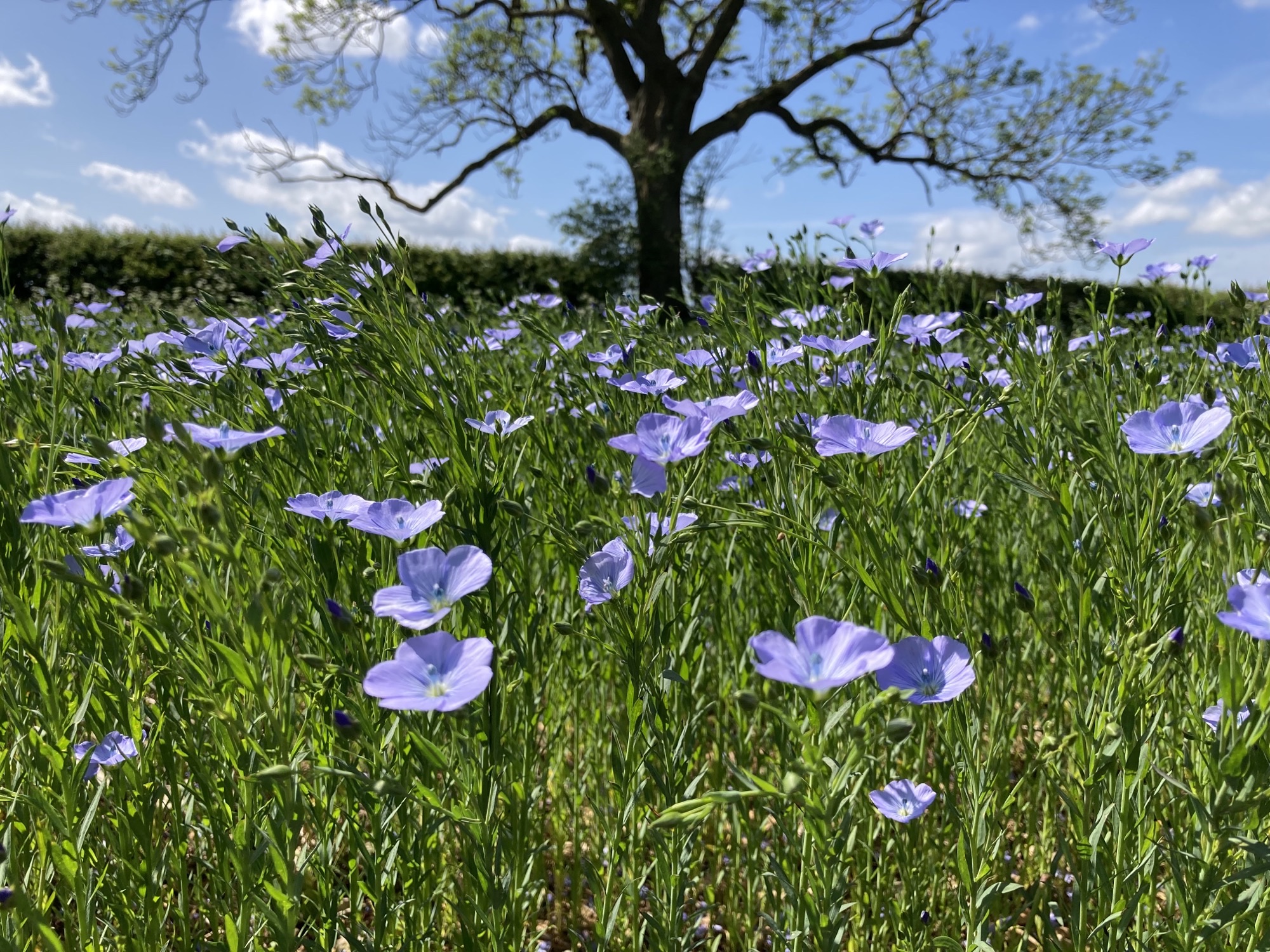
In the UK, linseed is split into the more
traditionally grown spring linseed, and
winter linseed.
Autumn weed control is one of the bigger challenges with winter linseed and there are a lot fewer herbicides available than for other crops, but a lot of off-label herbicides can be used, says Hannah. “It’s relatively simple to manage though. We advise two pre-emergence herbicides; the first is Avadex (triallate) for grassweeds and Callisto or Basilico (both mesotrione) for broadleaf weeds in granular or liquid form.
“Once it’s 5cm tall, use Centurion Max (clethodim) to control blackgrass that germinates later,” she advises. “Broadleaf weeds can be controlled by Eagle (amidosulfuron), which works well on cleavers, and by Jubilee (metsulfuron-methyl) which controls a broad range of weeds.”
According to Todd, linseed herbicide inputs can be costly and ineffective, not helped by the fact it isn’t the most competitive plant. “Weed control in linseed is always going to be a challenge, and the loss of carbetamide will only increase the challenge with grassweeds,” he says.
And winter linseed can suffer during harsh winters but Nigel states that a lot of work has been done to produce new varieties that are winter hardy. “The winter of 2020 was a harsh winter for all crops and our monitoring of linseed acreage for the entire year saw a loss of 5%.”
According to Todd, linseed is one of the most weather sensitive crops. “It does tend to suffer in drought conditions, but no worse than cereals. What does damage the crop is a late cold spell, like in April last year – especially on exposed ground and lighter soils. Linseed doesn’t do well if we have a hard or late winter, and this has included total crop failure.”
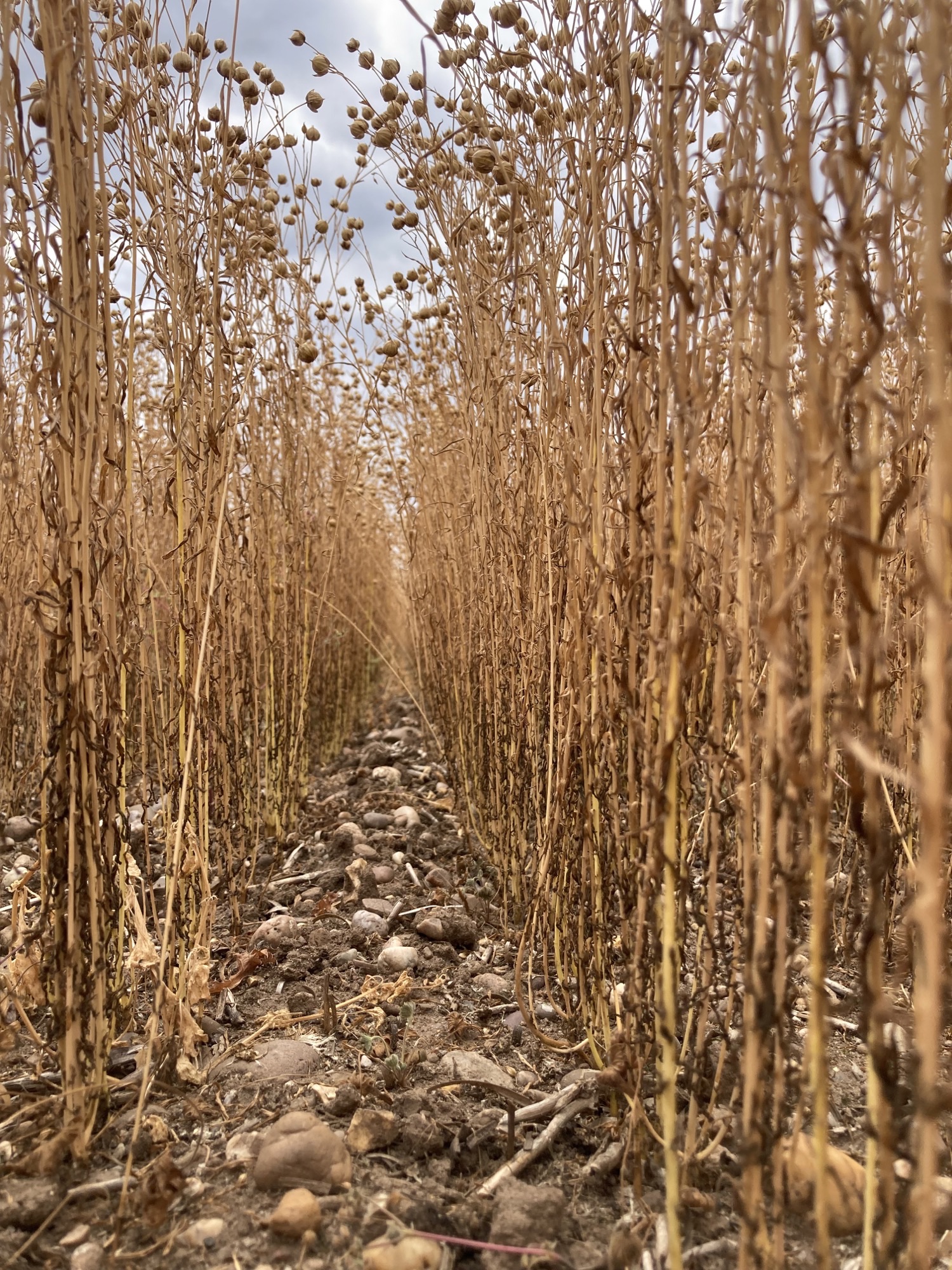
Linseed has a reputation for being difficult to combine due to the fibre content in the stems.
One issue growers may have experienced with linseed is at harvest, says Nigel. “It has a reputation for being difficult to combine due to the fibre content in the stems. But variety development in recent years has worked to reduce the fibre content and make linseed easier to harvest.”
Linseed is typically desiccated with glyphosate and will be ready to harvest a couple of weeks later, says Hannah. “Combining usually starts mid-July onwards and in conditions like this year, there aren’t really any issues.”
The stems almost want to be yellow, rather than completely brown, adds Nigel. “Get in there as soon as it starts to dry and desiccate.”
If growers use sharp knives on a dry day, then they’ll fly through the crop, he adds. “But if linseed is left too long, it can be bit of a challenge so timing is everything with harvest.”
Todd concurs that linseed can cause growers a headache at harvest. “You can be harvesting it fine in sunshine and then as soon as it clouds over, it won’t go through the combine anymore.
“And the crop residues are phenomenally good at wrapping around cultivators and drills, and it doesn’t break down quickly. Some people bale it, but then it’s a case of what to do with it then. Others row it up and burn it, but from an environmental and soil perspective this isn’t a desirable thing to do. So it can be difficult to manage. The best option is for the combine to chop up the trash as finely as possible and evenly distribute it, then use an appropriate cultivator to incorporate it or disc drill it to cut it in.”
Hannah agrees: “Anyone starting out on a no-till journey might get a thick layer of straw from linseed which could cause hair pinning and could lock up fertiliser.”
And storing it could also cause issues, adds Todd. “It runs like water so can’t be stacked high in sheds and it’s inadvisable to store it in bins.”
So what about linseed’s yield? The 2021 season was very difficult for linseed, according to Nigel. “The dry weather came at flowering and desiccated a lot of crops early, so winter linseed yields weren’t exciting.”
He feels growers should be budgeting to get 2-2.5t/ha. “And last year some struggled to get that but this year the picture’s completely changed, with growers getting 3t/ha plus.”
In terms of the price growers can get for their linseed crop, its value doesn’t fluctuate as violently as OSR, according to Nigel. “Linseed typically trades in the £400-£500/t range, although this year with the issues in Ukraine, those values have been in excess of £600/t.”
He strongly advises that growers have a contract in place for any minor crop rather than growing them for the open market. “Most end markets are trying to maintain a regular and consistent supply and can be talking to us 18 months in advance to secure supply. If growers appear on the open market and try to sell on spot, they could get a significant price penalty compared with those on a contract.”
But there’s opportunity for a greater area of linseed to be grown. “Because the UK’s linseed is mostly feeding animals, there’s a huge market for it and we can’t grow enough here to supply demand,” explains Nigel.
There are also other specialist contracts available for spring linseed and yellow linseed for human consumption, as well as ultra-high Omega-3 contracts. “End users pay a premium for these.”
But Todd feels linseed will struggle to compete with the potential profitability of OSR at the moment. “I always feel more comfortable with the risks involved with OSR than linseed, once you’ve overcome the CSFB the worst-case scenario still involves a crop going through a combine at harvest, whereas with linseed a harsh, late run of frosts can take the crop out. But it’s worth considering as there aren’t a lot of break crops out there and the current varieties are an improvement on previous ones.”
Grow it right
James Chamberlain has grown spring linseed for years and moved into growing winter linseed three years ago after his OSR crop was decimated by CSFB. Based near Shardlow in Derbyshire, James farms 650ha of mostly combinable crops.
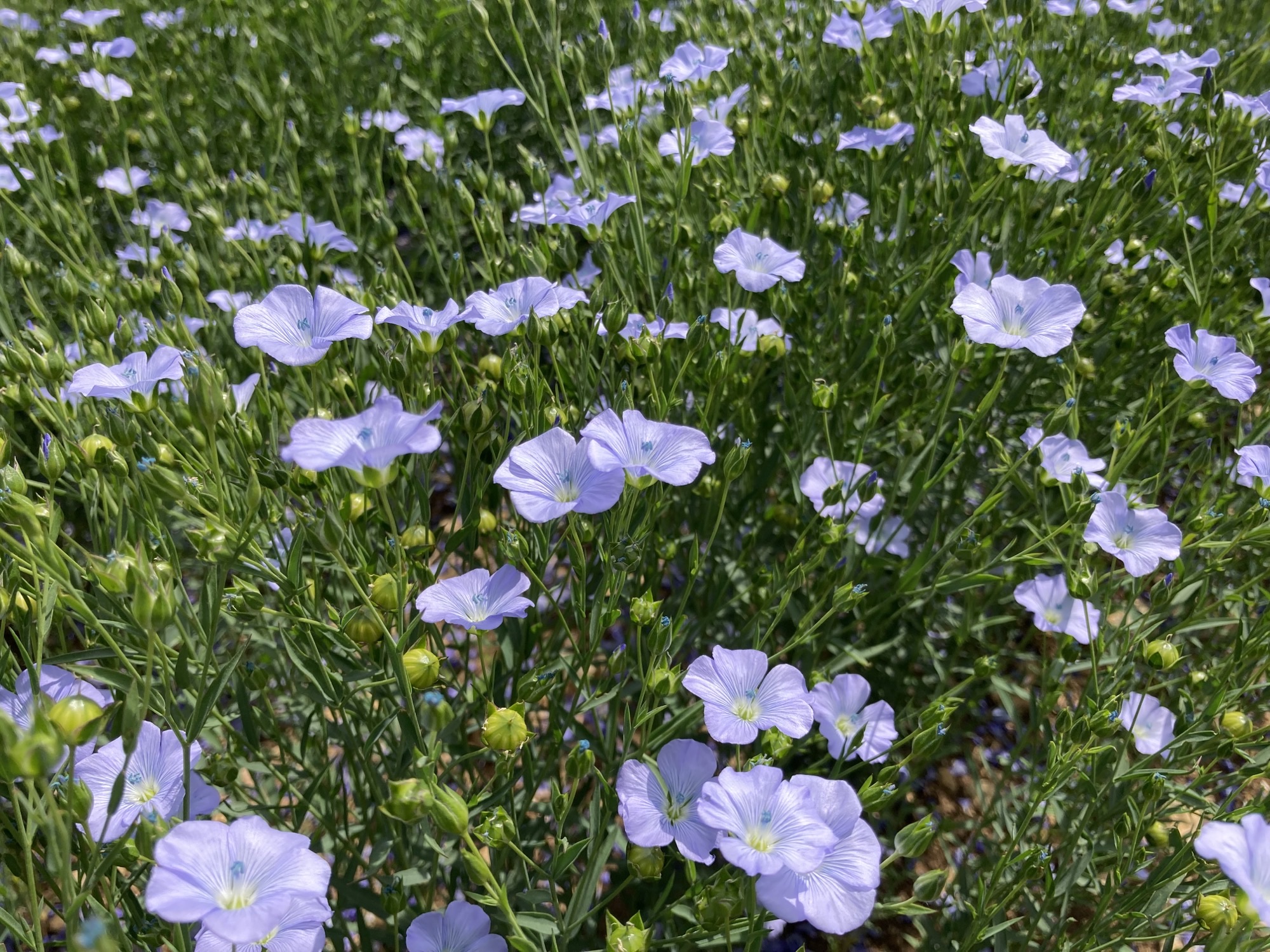
James Chamberlain grows linseed every year and is surprised more people aren’t growing it.
“I grow linseed every year and know I’m in a minority as a lot of people are frightened of growing it, but if you follow certain growing principles – all things being equal – you shouldn’t have problems,” he explains. “It’s the same as any crop, you want timeliness of inputs and the weather on your side and then you’ve potentially got a high value output crop.”
James advises growers not to cut linseed with a rotary combine, but instead with a normal straw walker. And provided weeds have been controlled and the crop has been desiccated, there shouldn’t be a problem. “Only combine it when the sun is shining – if you try on a cloudy day, the crop simply won’t flow.”
He believes that like any other crop, if the weather is on side and linseed can be harvested in good time, growers will get a return. “If things go well, you can get a very respectable yield. Aim for 2.5t/ha, but it’s not unreasonable to achieve 3t/ha. This year I’ve had between 3-3.5t/ha which we have put down to the fact that the crop was well established in the autumn and the roots have followed moisture down in the spring.
“Having had the recommended fungicide and growth regulator policy in the spring this allowed the crop to maximise green leaf area retention to utilise the extra sunlight this year, resulting in a very pleasing yield.”
James is surprised more people aren’t growing it. “Linseed offers all the normal advantages of a combinable break crop and, most importantly, doesn’t suffer from CSFB. It works well at both ends of the season to spread workloads and can produce very pleasing yields.”
This article was taken from the latest issue of CPM. For more articles like this, subscribe here.

